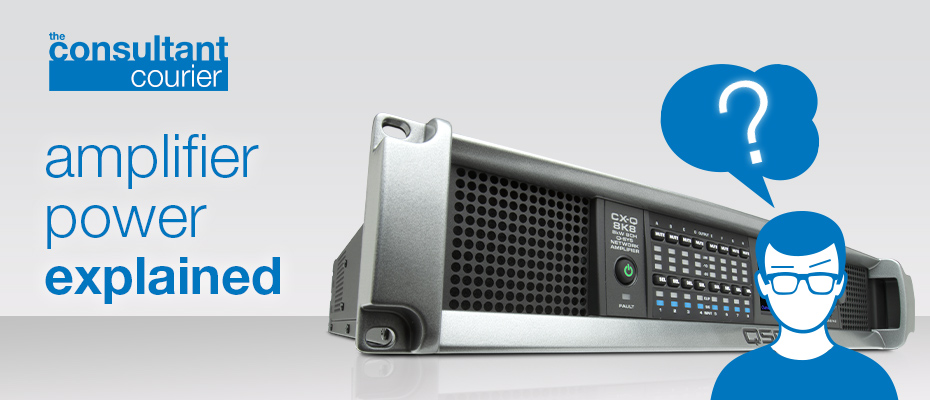You have to consider everything from the AC power outlet (and its circuit breaker) that powers the amplifier all the way through to the load. Each “link” in the chain has maximum limits that determine output power limits under various conditions.
The AC Wall Outlet
Selecting the AC supply for amplifiers is very simple – if there’s a choice to run the amplifier on 120 VAC or 240 VAC, you should use the higher voltage. For the same circuit breaker current limit, 240 VAC will supply twice the continuous and peak power capability as 120 VAC, and will give greater amplifier headroom under high output conditions.
The Power Supply
Although the CX-Q Series power supply is very robust, every design has limits. The Q-SYS CX-Q 4K4 can provide 4 x 1000 W on a short term basis, but continuous (approximately five minutes operation before protection measures reduce the power) is thermally limited to about 2500 W. This design approach gives the best amplifier performance for speech and music at a reasonable cost and physical size of the power supply – even when the system is turned up to 11.
The Amplifier
Like all real world amplifiers, the CX-Q Series has limits on its output voltage, output current and cooling ability. 8 Ω and 4 Ω loads take best advantage of the output voltage and current capabilities of the CX-Q 4K4, whether the amplifier is in independent, parallel or bridged mode. 2 Ω loads can be driven in independent or parallel modes, but the best “bang for the buck” in all modes is a 4 Ω load.
Best Practices
- When driving low impedance loads, favor 4 Ω and above for best use of the full current, voltage and voltage capability of these amplifiers. Loads down to 1 Ω can safely be driven by the CX-Q amplifiers under some circumstances, but loads at or below 2 Ω don’t offer the absolute best these amplifiers can provide. If 2 Ω or lower loads are unavoidable, consider using the CX-Q 8K4. It’s specifically optimized for very low impedance speaker loads.
- Power the amplifiers with the highest AV voltage available in the venue, up to 240 VAC. This ensures the best amplifier efficiency and the lowest AC current draw for a given output power.
- Be sure the amplifiers have adequate space in front of and behind them in the rack so they are properly cooled. Although the CX-Q amplifiers are some of the most efficient in the industry, they still generate some heat. Proper thermal management is a must for long life, and also extends the time these amplifiers can operate continuously at higher powers.
For more information, check out this white paper, “Q-SYS CX-Q Series Output Power Capacity Explained” here: www.qsys.com/cxqexplained.
Mike Sims
Latest posts by Mike Sims (see all)
- Dante Latency – A Few Details - July 3, 2022
- A Deeper Dive into Loudspeaker Directivity (Consultant Courier) - November 4, 2021
- What About Long-Term Amplifier Power Output? (Consultant Courier) - September 7, 2021
